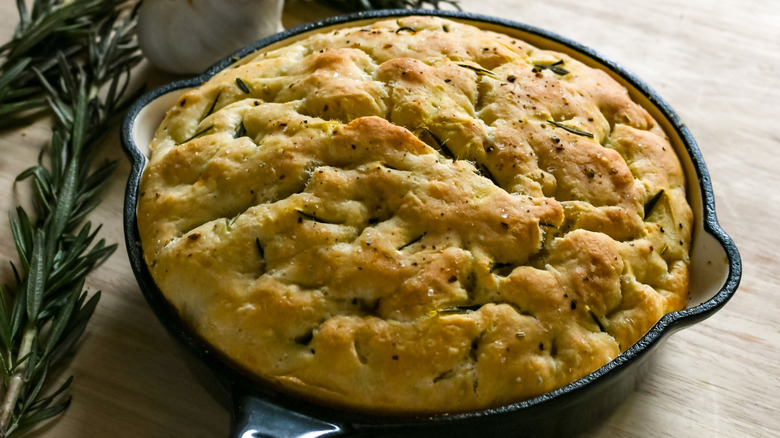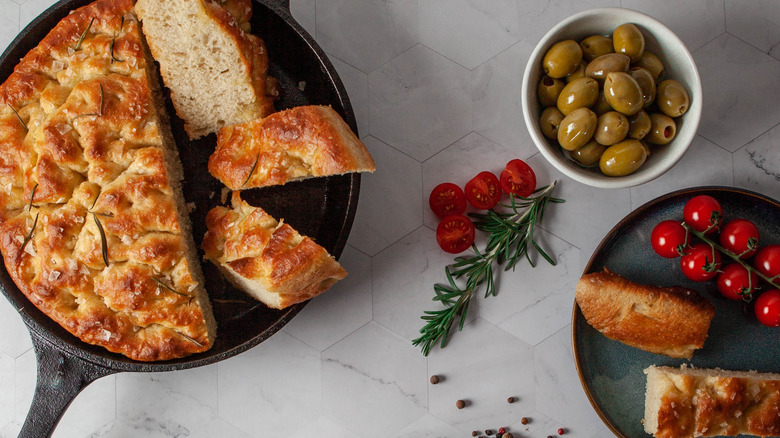The Case For Making Focaccia In Your Cast Iron
Focaccia, the Italian flatbread flavored with olive oil, is a great gateway baking project for bread novices. With very little hands-on prep and even less kneading, you can easily achieve the crisp-on-the-outside soft-on-the-inside sensation yourself. A cast iron skillet works wonders to deliver a crispy texture to your homemade focaccia.
First and foremost, the smaller surface area of a cast iron pan makes it easy to spread out your dough before you bake it. Anyone who has tried to spread out stubborn dough knows that this is a win in and of itself. It's also much easier to check if it's crispy underneath at the end of its baking time by just lifting up an edge. Cast iron pans also get tremendously hot in the oven, which is helpful for a focaccia dough that you're trying to substantially crisp up on all sides. Focaccia recipes call for quite a bit of olive oil to prevent sticking, but you'll find you need less when baking in a well-seasoned cast iron pan.
Focaccia dough is very forgiving, so feel free to use a 10-inch or 12-inch pan — or whatever size skillet you have. Just note that the smaller the pan, the taller your focaccia will be. No matter how much height you get, your cast iron pan will crisp up the edges while the center stays perfectly soft.
Other pans don't compare to the cast iron
For focaccia dough, the go-to option for home cooks is usually a baking sheet. While baking sheets certainly do the trick, and offer ample room for toppings, you lose control of the texture. If your dough doesn't reach the edge of the pan, those amorphous sides won't get crisp. A baking sheet will also yield very thin focaccia, which isn't what we're looking for texturally. Finally, spreading your dough over a large surface area makes it quite challenging to check the bottom for doneness and you'd hate to have an undercooked or under-crisped center after all that.
Another option is to bake it in a 9-by-13 baking dish. This method will yield an extra thick focaccia with a plush interior and pretty crispy edges. Still, other baking vessels can't match the cast iron skillet's ability to retain and circulate heat, which is why they're the best option for home cooks for fool-proof crispy-edged results.
Cast iron skillets also heat quickly and evenly, more so than enameled pans, so you'll have your focaccia on the table before you know it. If you have more than one cast iron pan, it's also easy to make multiple loaves and then store your extra focaccia in the freezer for later. When you're ready to heat it, you can either pop it in the microwave or back in your cast iron pan for just a few minutes in the oven.

